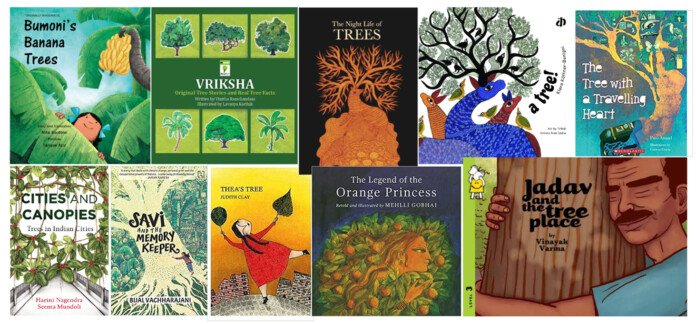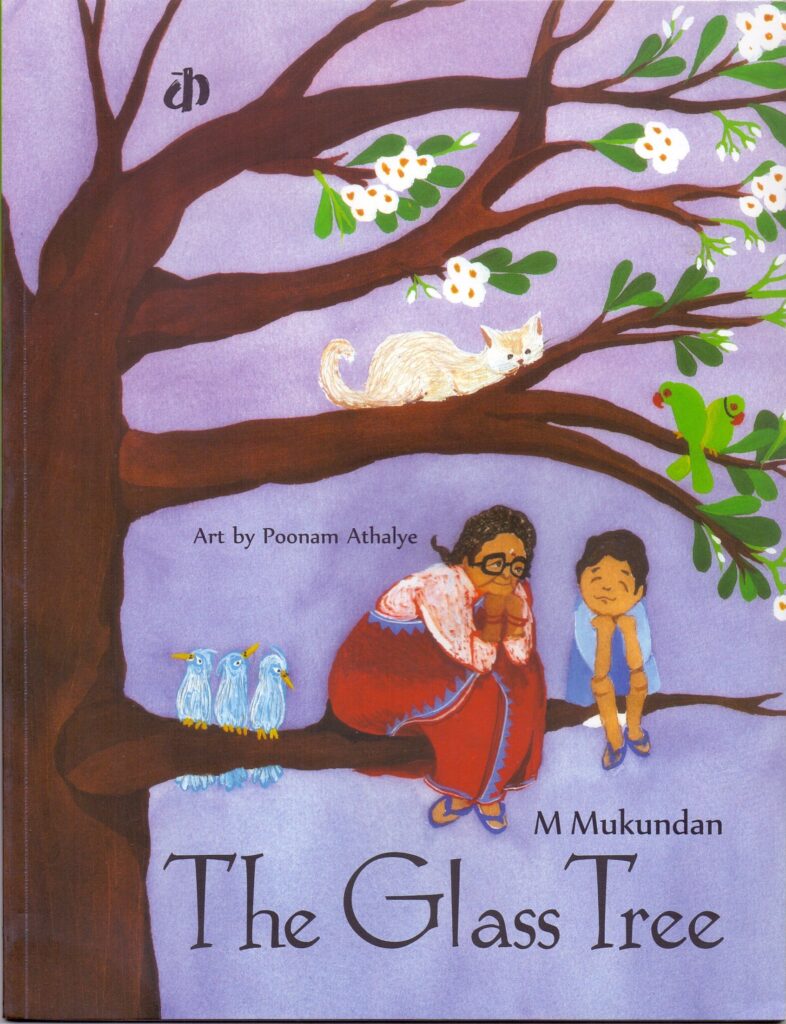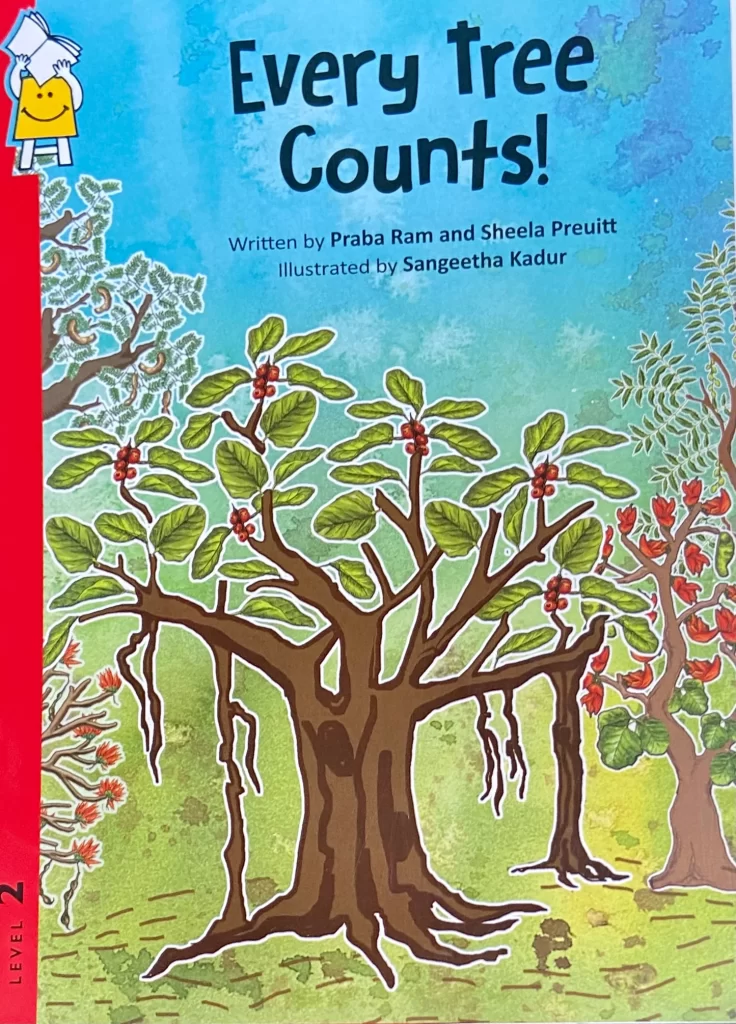The German educator Friedrich Fröbel, known for his work in early childhood education, said “To climb a tree is for a child to discover a new world.” Perhaps, the same can be said about reading. Trees and books both offer scope for escapism, exploration and adventure. Maybe that is why we see a profusion of trees in children’s literature.
While it is easy to get children to connect with animals – they move and communicate in ways that humans can notice – their connection with plant life, that is not as animated, tends to be hazy. Children’s literature bridges this gap with stories that humanize trees, helping children to look at them as thriving co-inhabitants of their world, inspiring a need to protect them. It builds a vocabulary needed to talk about nature and offers ways in which children can engage with the natural world.
Trees in tradition
India has a long history of integrating nature into tradition… be it religious rituals, medicine, food or social practices. This has culminated in the most wonderful stories set in mythology and folklore. Tracing Roots – Stories about Trees retells traditional myths, legends and folktales of trees we commonly see around us. In The Legend of Orange Princess, one learns of a princess who turns into an orange tree while Vriksha – Original Tree Stories and Real Tree Facts features ‘origin tales’ and interesting facts about Indian trees, drawing children’s attention to their leaves, seeds, fruits and seasonal changes.
Not just mute spectators
Trees are often seen as mute spectators in the drama of human existence. They tend to go unnoticed and are perceived as things that are dispensable, in the name of progress. Thea’s Tree and The Glass Tree, channel the moral message of the typical fable to alert the reader about what could happen in a world without trees. Meanwhile, Lunch-Friends uses realistic-fiction to not only narrate a story about all the lives affected by a tree that’s been cut down, but also suggest proactive ideas to right the wrong.
Studies have shown that trees have a life of their own. Under and above ground, they communicate with each other, sharing not just water and nutrients but also essential information by sending chemical signals through the air and mycorrhizal networks. Friendship, support, greed, betrayal… there are all kinds of goings on in this subterranean network a.k.a. the wood-wide-web… In The Island of the Missing Trees Eli Shafak writes, ‘A tree is a memory keeper. Tangled beneath our roots, hidden inside our trunks, are the sinews of history.’ Trees are, indeed, rooted sentinels who serve as great ‘record keepers’, tucking away all they witness in the rings within their trunks. Out of the Way! Out of the Way!, The Tree with a Travelling Heart, and Savi and the Memory Keeper feature trees as witnesses, receivers and keepers of human history, as it unfolds around them. By effortlessly linking trees to the human experience, these books encourage readers to care and feel for them.
Observing Trees
Omnipresent in our everyday lives, trees offer ready subjects for children to observe and cherish. The Cherry Tree outlines the magic and wonder in watching a tree grow. The Gular Flower, Bumoni’s Banana Trees and Bulbuli’s Bamboo feature children whose lives are intertwined with particular trees… the cluster fig, the banana tree and bamboo, nudging readers to marvel at the significance of these trees without forcing lessons on their multiple uses.
Even the simplest books can help children notice the trees around them. Every Tree Counts, a counting book, familiarizes the youngest child with trees we see around us, while The Seed and So Many Leaves encourage curiosity and interest.
Tree heroes
By reflecting on the lives of people engaged directly and indirectly in conservation, biographies of real life heroes answer the endlessly fascinating question: “Did a real person do this?”
Jadav and the Tree Place, tells the story of Jadav ‘Mulai’ Payeng from Majuli in Assam, who was so moved by the sight of a dying snake, that he planted trees and single-handedly created a forest that sustains the web of life. In The Girl who was a Forest, we read how a tiny seed and the promise of a forest it holds within, inspires a young Janaki Ammal to dedicate her life to botany – the study of plants. Chipko takes Root narrates the tale of a little tree-hugger Dichi, who helped protect the trees in her village as part of the famed Chipko movement, a seminal event in India’s environmental history.
The ‘art’ of trees
Art has long been a medium through which we understand culture and beliefs. In The Night Life of Trees, we see how trees are a recurring motif in the stunning indigenous art of the forest dwelling Gond tribals, highlighting how central trees are to their life and beliefs. Meanwhile, A Tree uses poetry set against diverse tribal art forms, to urge children to care for nature.
The role and place of trees in the social and cultural life of India is beautifully explored through a range of genres in Indian children’s literature. These books are vital in helping children bond with the trees around them and forge connections that come from a place of understanding. Using approaches that go beyond the material relevance of trees, they stimulate creativity and inspire new ideas in young minds.
As Chris Maser outlines in his book Forest Primeval: The Natural History of an Ancient Forest ‘What we are doing to the forests of the world is but a mirror reflection of what we are doing to ourselves and to one another.’
Learning about trees is learning about humanity.
Caring for our trees is caring for humanity.
JoAnne Saldanha a.k.a Myth Aunty is a library educator, passionate about books and baking.
Recommended reading
- Tracing Roots: Stories about Trees by Mallika Ravikumar and Swati Kharbanda (Karadi Tales)
- The Orange Princess by Mehlli Gobhai (Talking Cub)
- Vriksha – Original Tree Stories and Real Tree Facts by Vinitha Ramchandani and Lavanya Karthik (Mango DC)
- The Night Life of Trees by Bhajju Shyam, Durga Bai, Ram Singh Urveti (Tara Books)
- A Tree by Klara Köttner-Benigni and various tribal artists from India (Katha)
- Thea’s Tree by Judith Clay (Karadi Tales)
- The Glass Tree by M Mukundan and Poonam Athalye (Katha)
- Lunch-Friends by Srividya Venkat and Shailja Jain Chougule (Tota Books)
- The Cherry Tree by Ruskin Bond (Puffin)
- Out of the Way! Out of the Way! by Uma Krishnaswami and Uma Krishnaswamy (Tulika)
- The Tree with a Travelling Heart by Paro Anand and Garima Gupta (Scholastic)
- Savi and the Memory Keeper by Bijal Vachharajani (Hachette)
- The Gular Flower by Rinchin and Vipul Verma (Tulika)
- Bumoni’s Banana Trees by Mita Bordoloi and Tarique Aziz (Tulika)
- Bulbuli’s Bamboo by Mita Bordoloi and Proiti Roy (Tulika)
- Jadav and the Tree Place by Vinayak Verma (Pratham)
- The Girl who was a Forest by Lavanya Kartik (Duckbill)
- Chipko Takes Root by Jeyanthi Manokaran (Pratham)
- Every Tree Counts by Prabha Ram, Sheela Preuitt and Sangeetha Kadur (Pratham)
- The Seed by Deepa Balsavar (Tulika)
- So Many Leaves by Harini Nagendra, Seema Mundoli and Barkha Lohia
- Let’s Plant trees by Vinod Lal Heera Eshwer (Tulika)
- The Kite Tree by Avanti Mehta and Nirupama Sekhar (Tulika)
- In Bon Bibi’s Forest by Sandhya Rao and Proiti Roy (Tulika)
- My Tree Friend by Shreekumar Varma and Rae Zachariah (Pratham)
- Best Friends by Nina Sabnani (Tulika)
- Harvest Day by Niyatee Sharma and Vibha Surya (Tota Books)
- Thatha’s Pumpkin by Lalita Iyer and Proiti Roy (Karadi Tales)
- Unearthed: An Environmental History of Independent India by Meghaa Gupta
- The Island of the Missing Trees by Eli Shafak (Viking)
- Cities and Canopies by Harini Nagendra and Seema Mundoli (Penguin)
- How I Became a Tree by Sumana Roy (Aleph)












